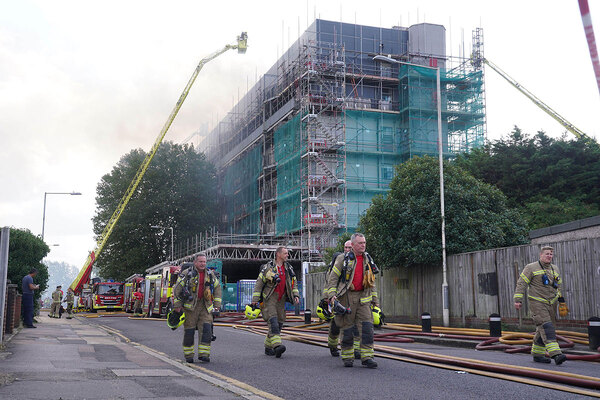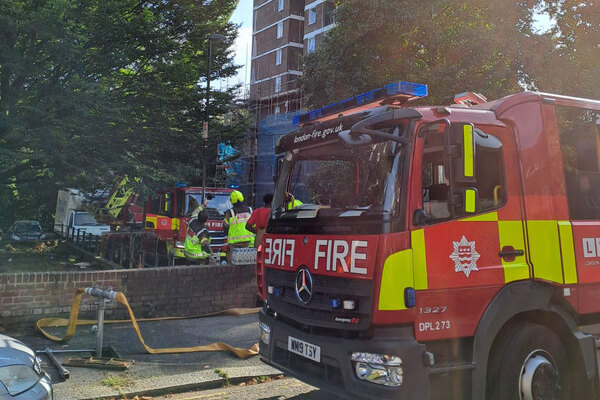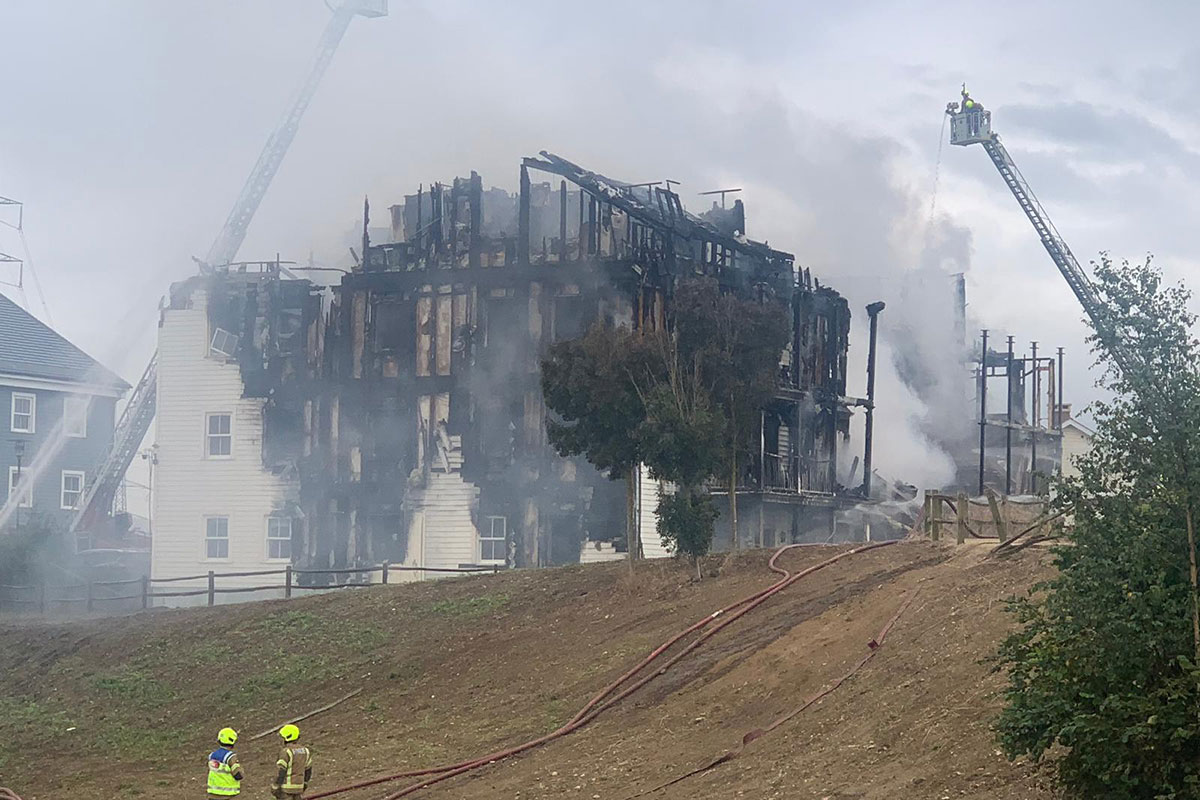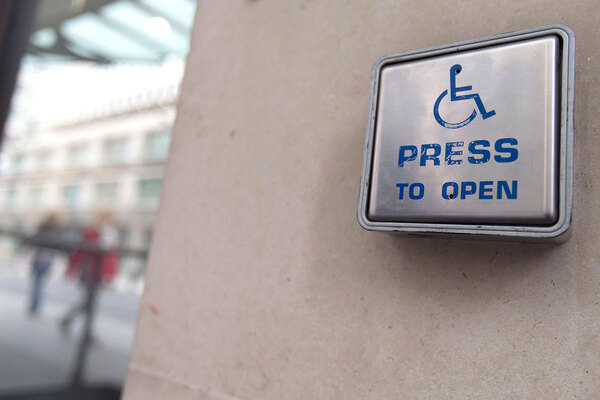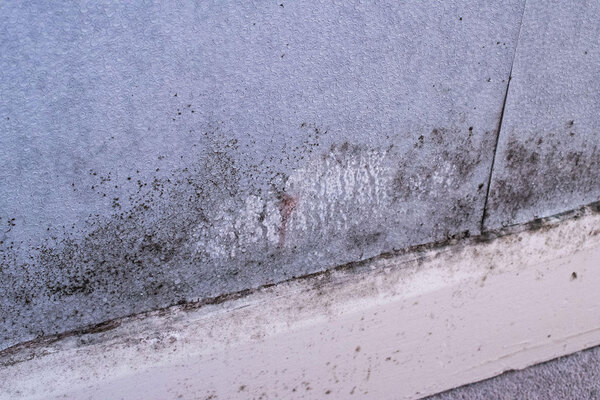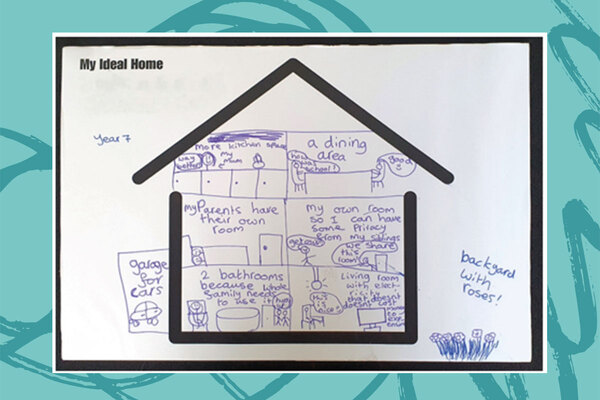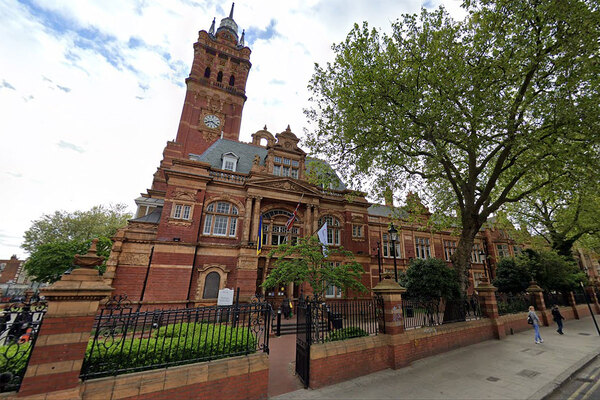You are viewing 1 of your 1 free articles
The fire in Dagenham adds urgency for action on next week’s final Grenfell Inquiry report
Jules Birch dissects how the latest cladding disaster will impact the government’s action on building safety
If anyone needed a reminder, Monday morning’s major fire at an apartment block in Dagenham can only increase the urgency of finding a solution to the building safety crisis.
Thankfully, all residents are accounted for following a significant search and rescue operation, but the pictures of flames engulfing a building and the stories of residents fleeing their homes were only too familiar.
Coming nine days before the publication of the final report of the Grenfell Tower Inquiry, it will have revived some awful memories for the bereaved, survivors and families of the tower-block fire, even as it underlines the scale of the wider crisis that the report will not address directly.
And it will add to pressure on the government for more action, both to hold those responsible to account and to accelerate the pace of remediation work to make other buildings safe.
Work was apparently already underway to fix ‘non-compliant’ cladding and other issues at Spectrum House in Dagenham, which was surrounded by scaffolding. The former office block was converted into flats in 2015, with two extra floors added to create 60 apartments.
It was therefore presumably among the 949 buildings where official figures released last week say remediation work is underway. The fire demonstrates only too clearly that ‘underway’ is not the same as ‘finished’.
“At least half a million people are living in buildings with unsafe cladding, and three million in flats that are either unsaleable or uninsurable”
Work has been completed on 1,350 buildings, including most of those with Grenfell-style aluminium composite material (ACM) cladding.
But that still leaves 2,331 buildings where work has not even started. It cannot be stated often enough that, more than seven years after Grenfell, more than half of the blocks with unsafe cladding still have it.
To put a human face on that, according to campaign group End Our Cladding Scandal, at least half a million people are living in buildings with unsafe cladding, and three million in flats that are either unsaleable or uninsurable (possibly even more so after the Dagenham fire).
Spectrum House joins a long list of other buildings that have had major fires since 2017. As after those incidents, fear will be followed by relief that everyone is accounted for and anger that this keeps happening.
When Sir Martin Moore-Bick’s report is published next week, the immediate focus will quite rightly be on what he says contributed to so many deaths, who is held responsible and what he recommends to prevent anything like it ever happening again.
Campaigners will be looking to the government to pledge to implement the recommendations in full, in contrast to what happened after the interim report.
But ministers must also address the wider crisis, fill gaps in the current safety regime, tackle issues with non-qualifying leaseholders and accelerate the pace of remediation work on all those other buildings.
That will require more funding and much better co-ordination of what amounts to a huge construction project that is happening on thousands of individual sites all over the country.
“Ministers must also address the wider crisis, fill gaps in the current safety regime, tackle issues with non-qualifying leaseholders and accelerate the pace of remediation work on all those other buildings”
More funding does not necessarily mean more public money, but it must surely mean the extension of the Building Safety Levy, or something similar, beyond developers to the rest of the construction industry.
It’s now two-and-a-half years since then-housing secretary Michael Gove promised “tough new measures” to “make industry pay for building safety”, but the problems continue and the fires keep happening.
In its final policy platform published last October, Labour stated unequivocally that “leaseholders should be protected from the costs of remediating cladding and non-cladding defects in all buildings irrespective of circumstance”.
The manifesto in June was vaguer, but the party promised “decisive action to improve building safety”. It also pledged to “review how to better protect leaseholders from costs and take steps to accelerate the pace of remediation across the country” and to put “a renewed focus on ensuring those responsible for the building safety crisis pay to put it right”.
Publication of the final report on Grenfell next week was always going to demand a decisive response from the Labour government. The Dagenham fire will only increase the pressure.
Jules Birch, columnist, Inside Housing
Sign up for our fire safety newsletter
Already have an account? Click here to manage your newsletters


